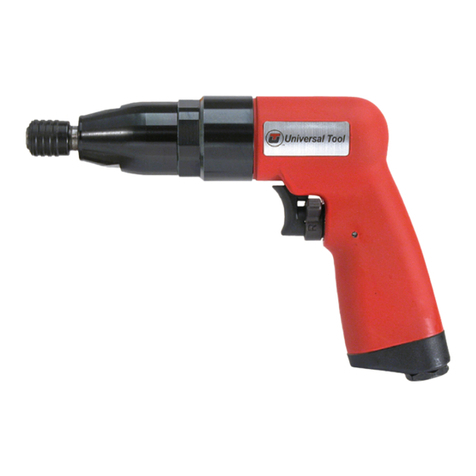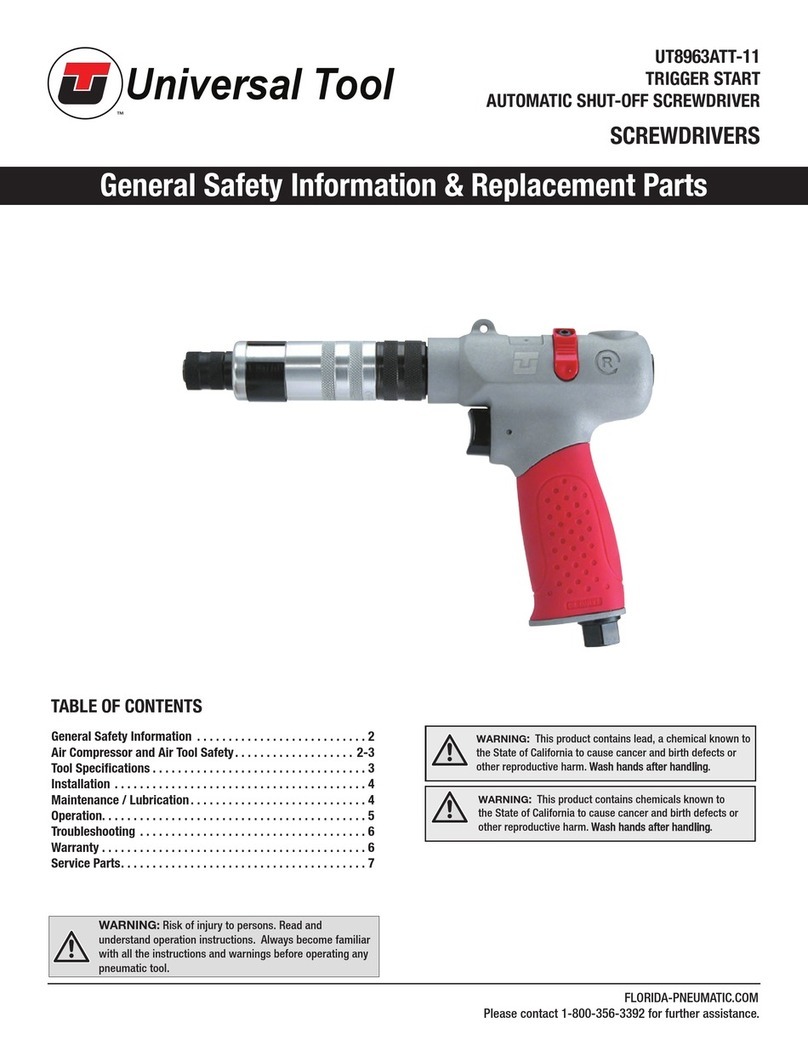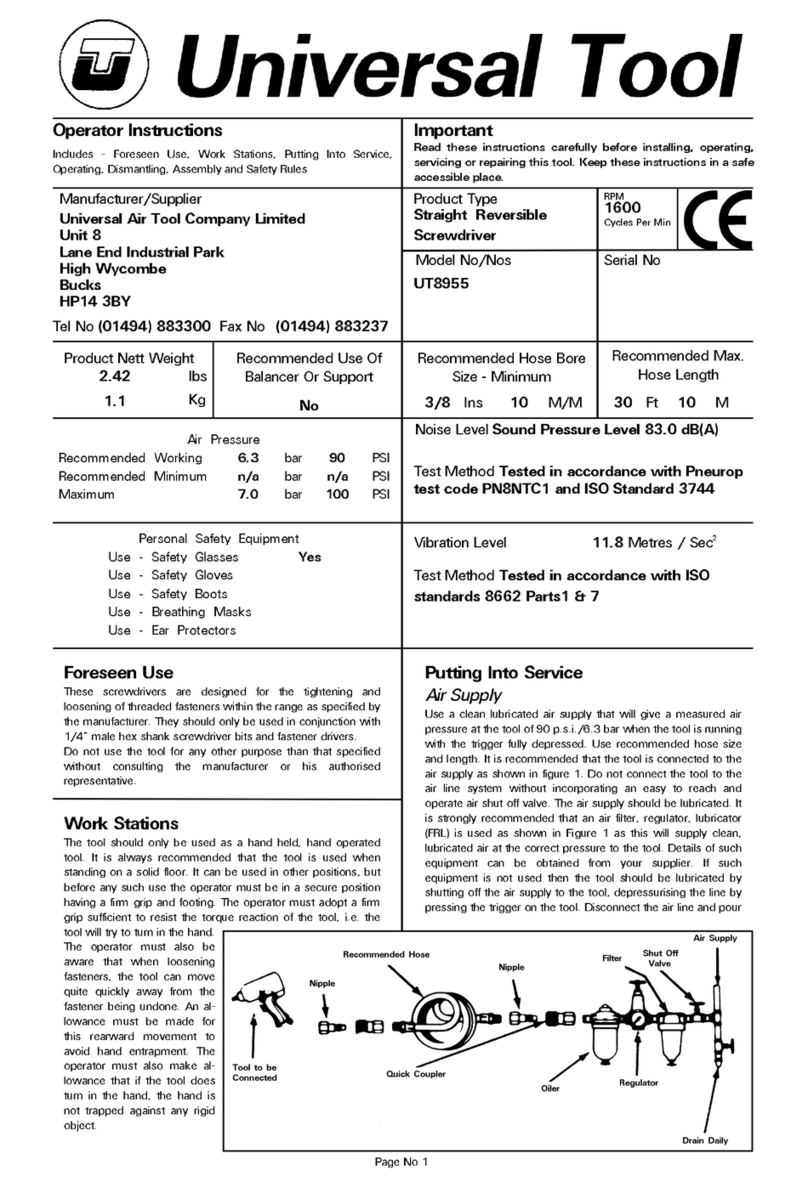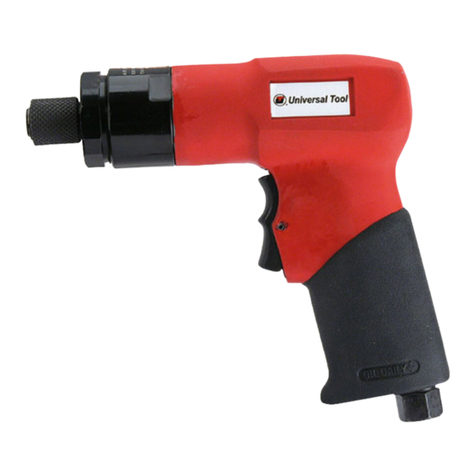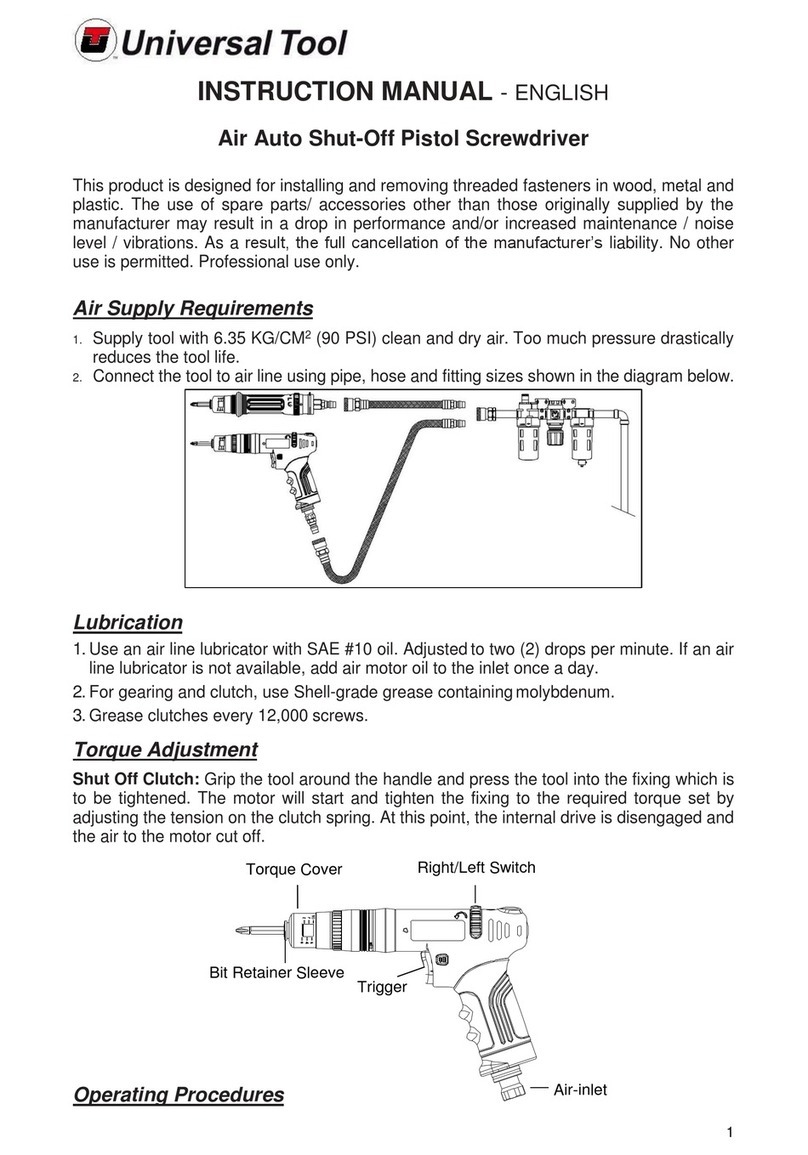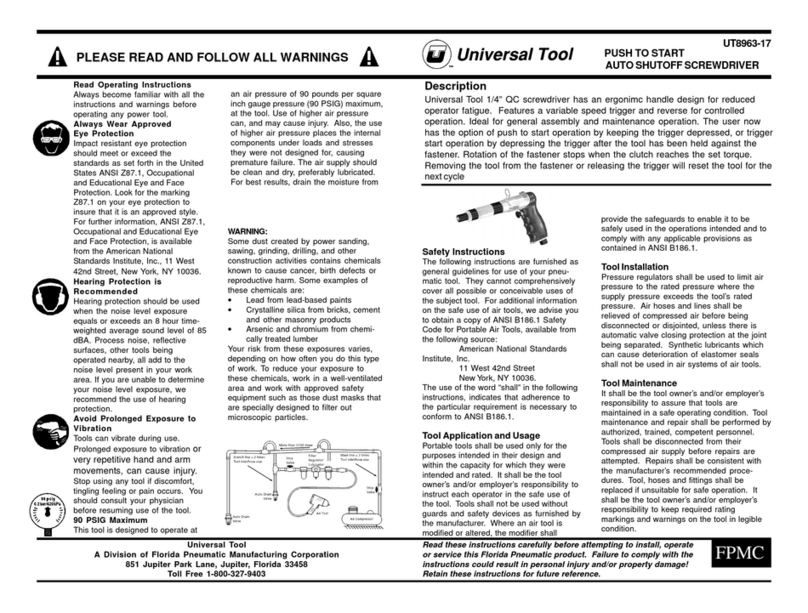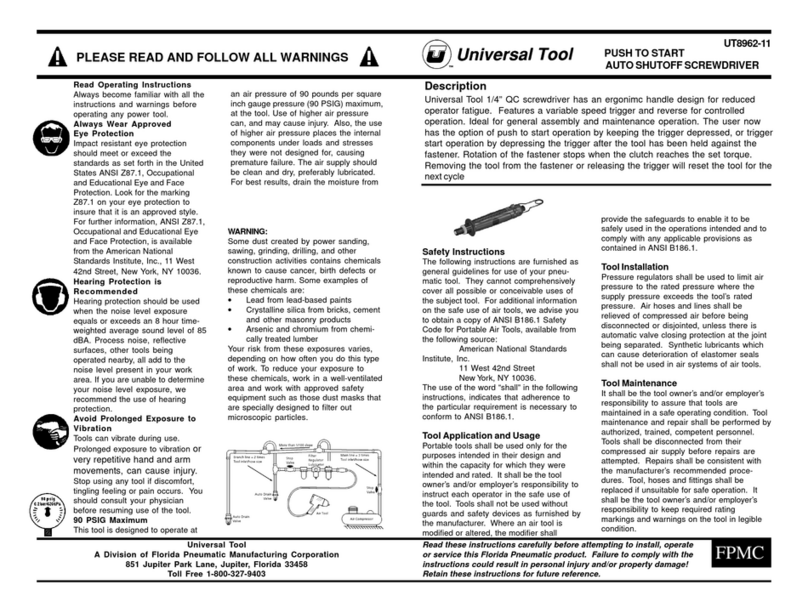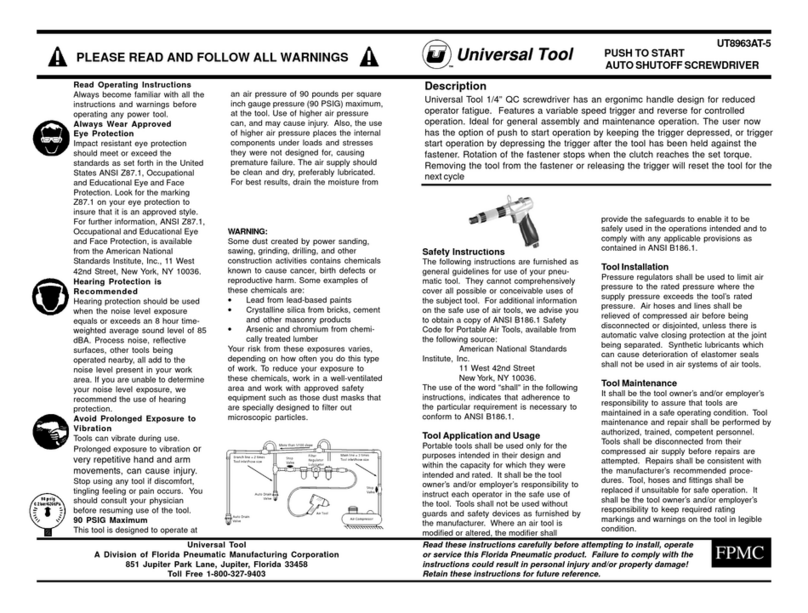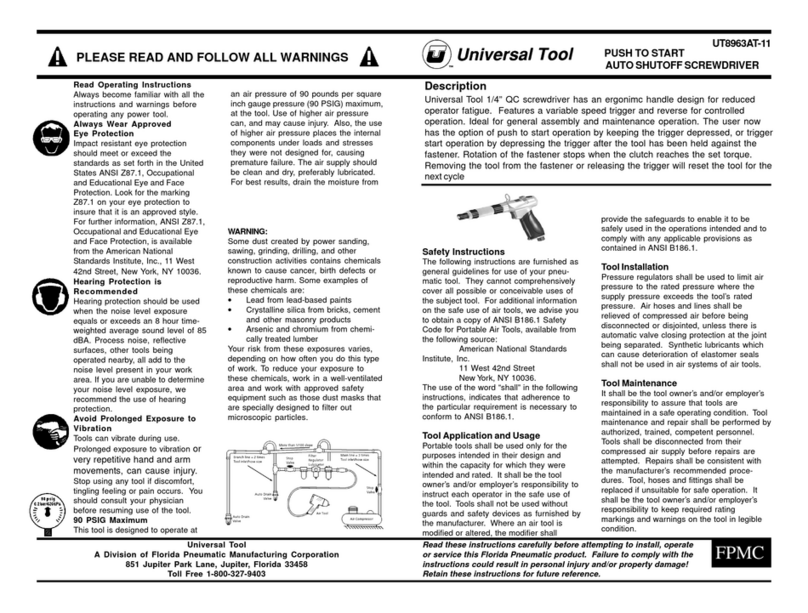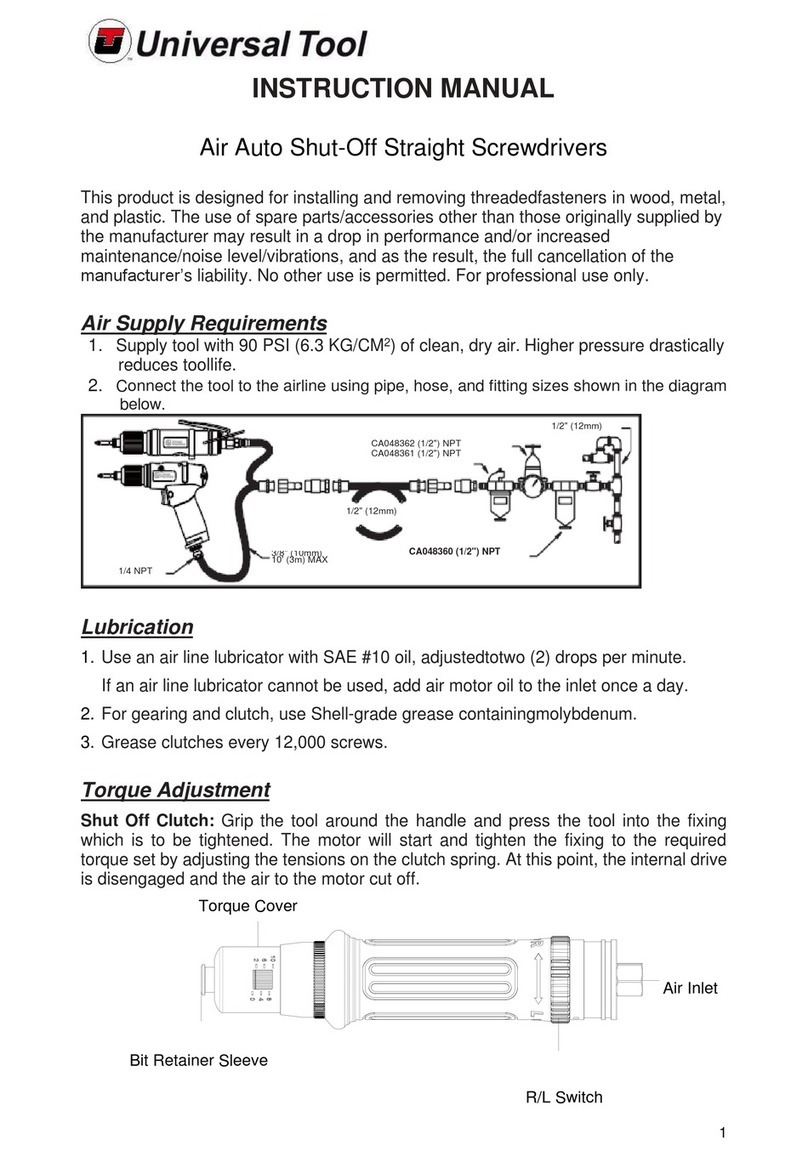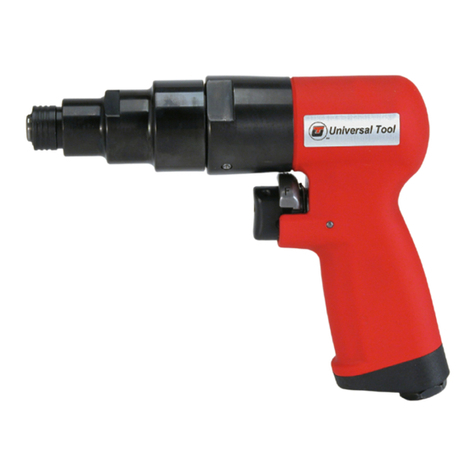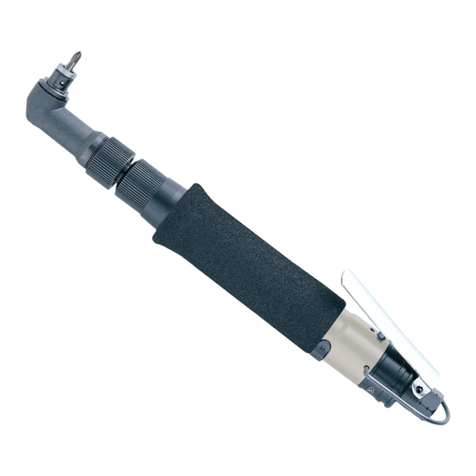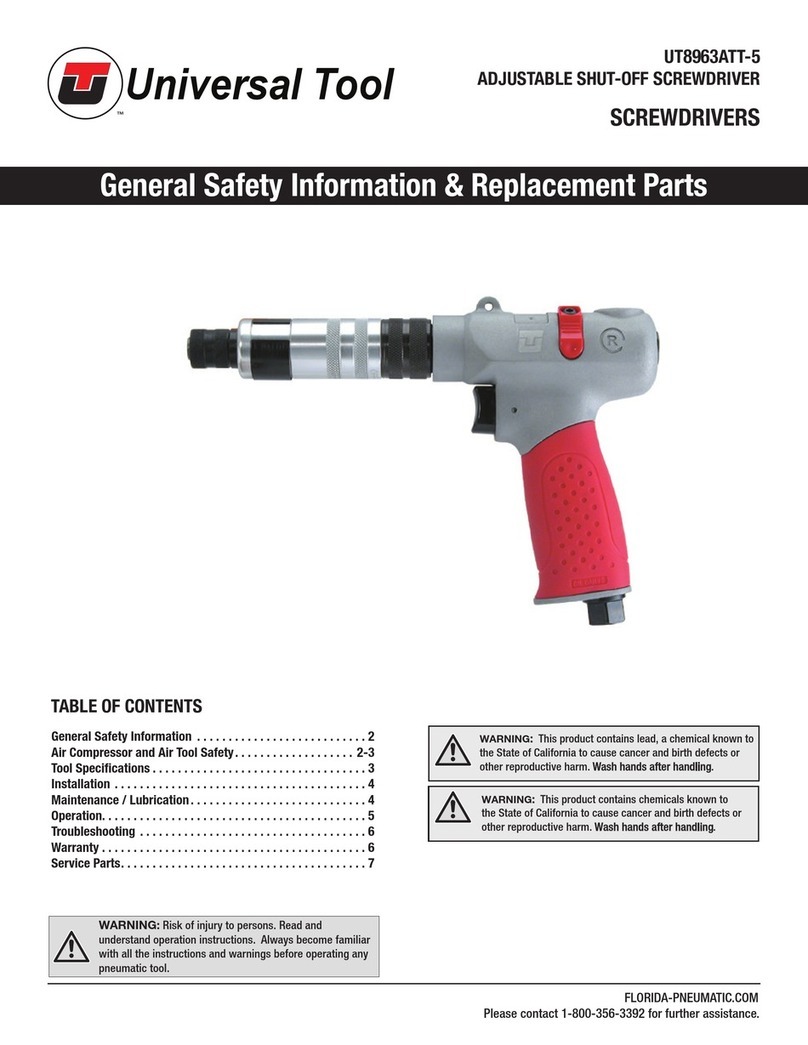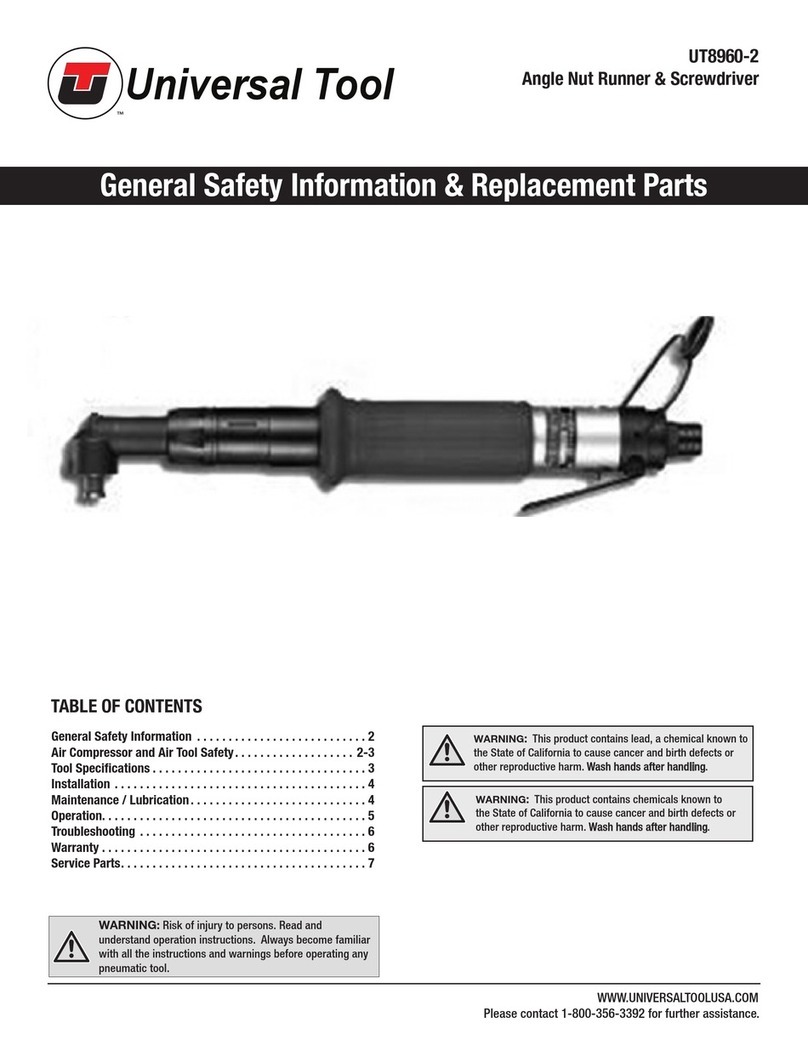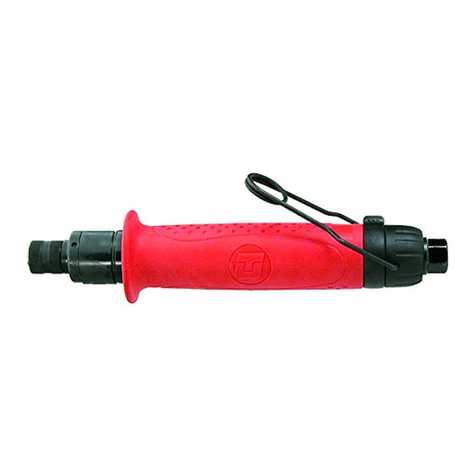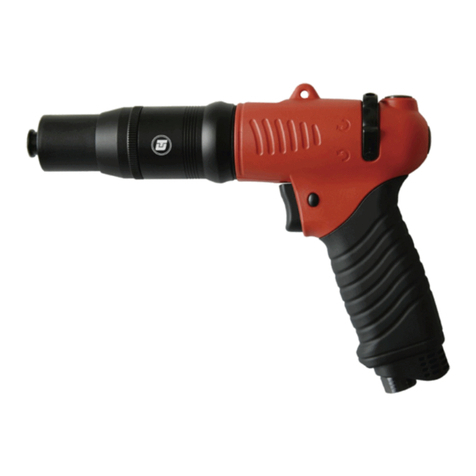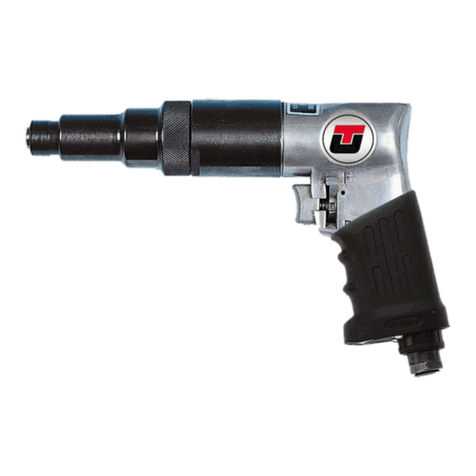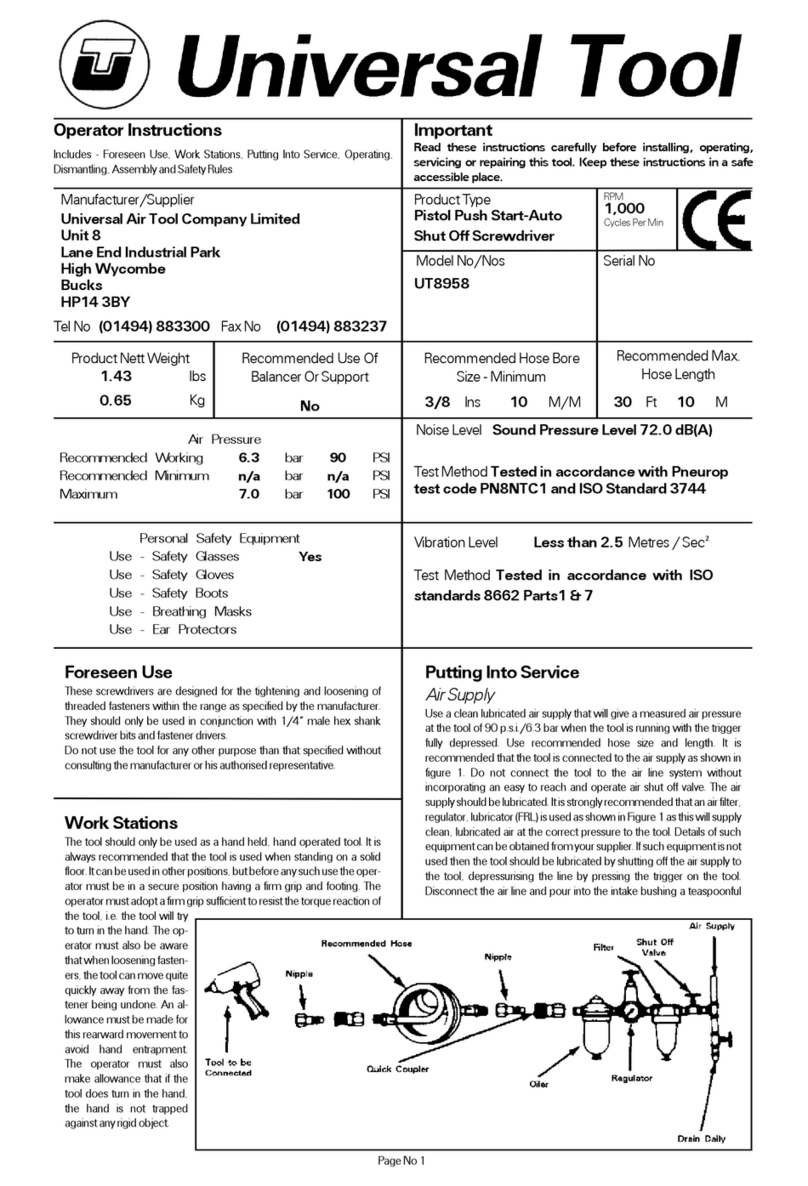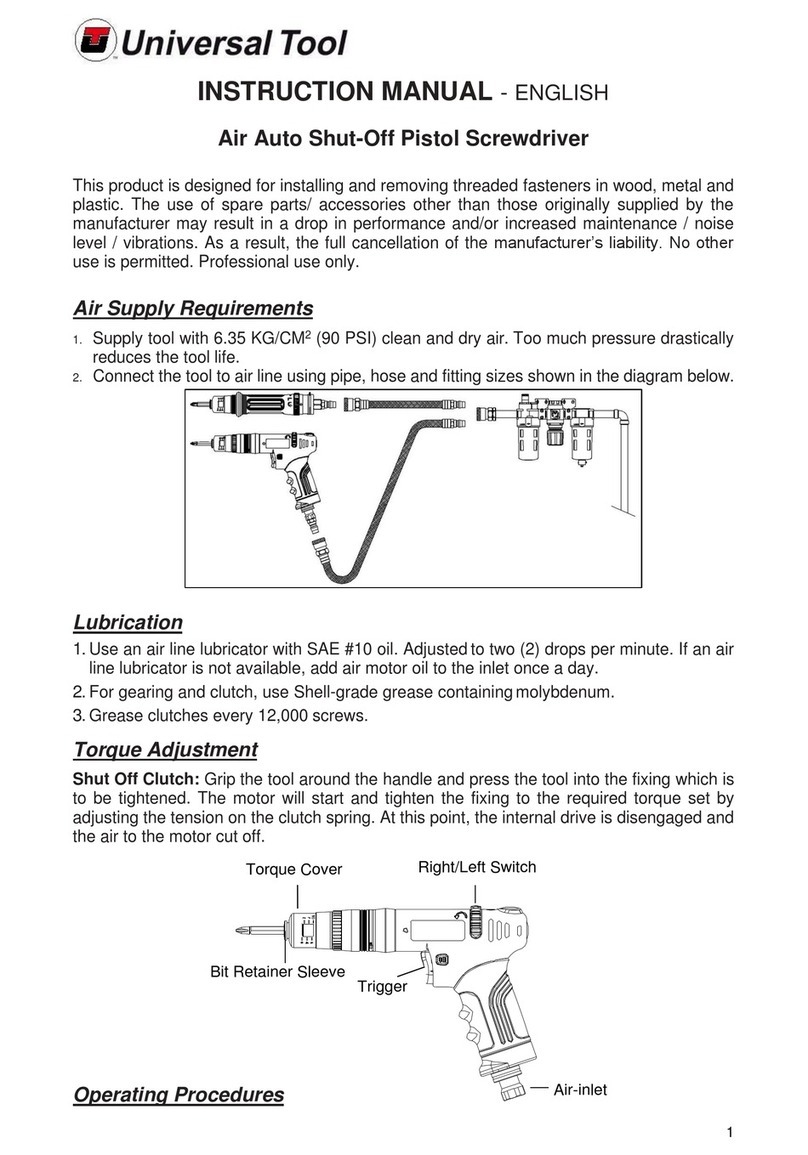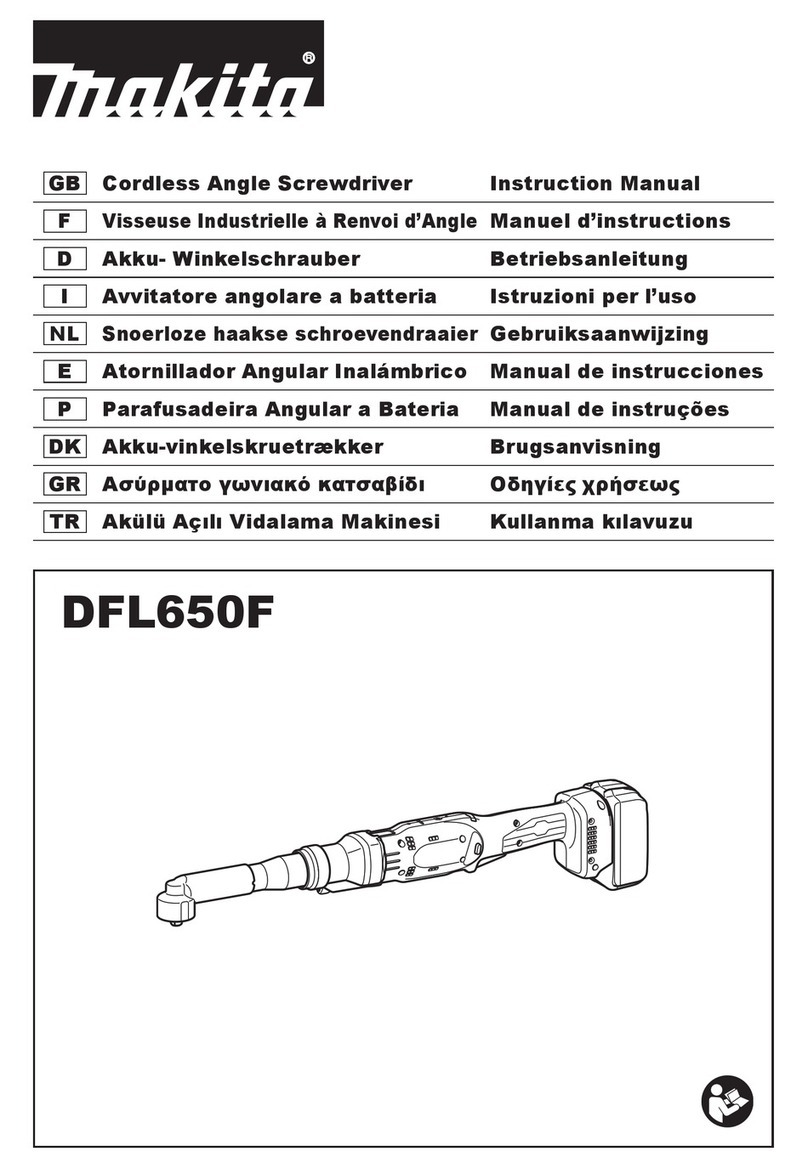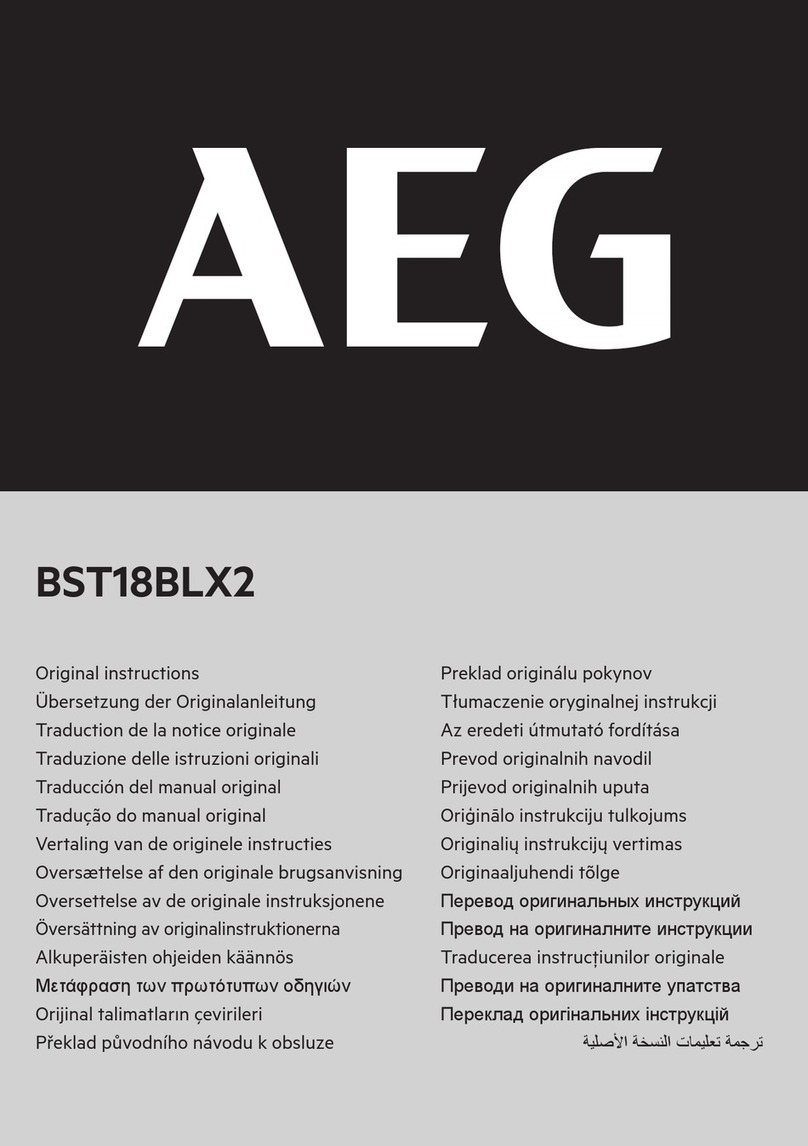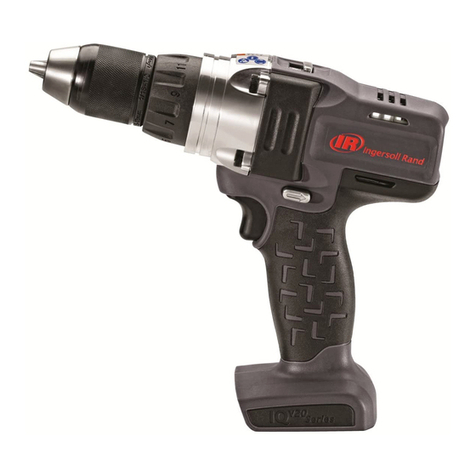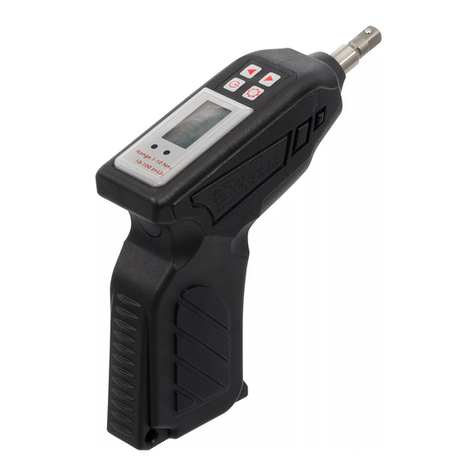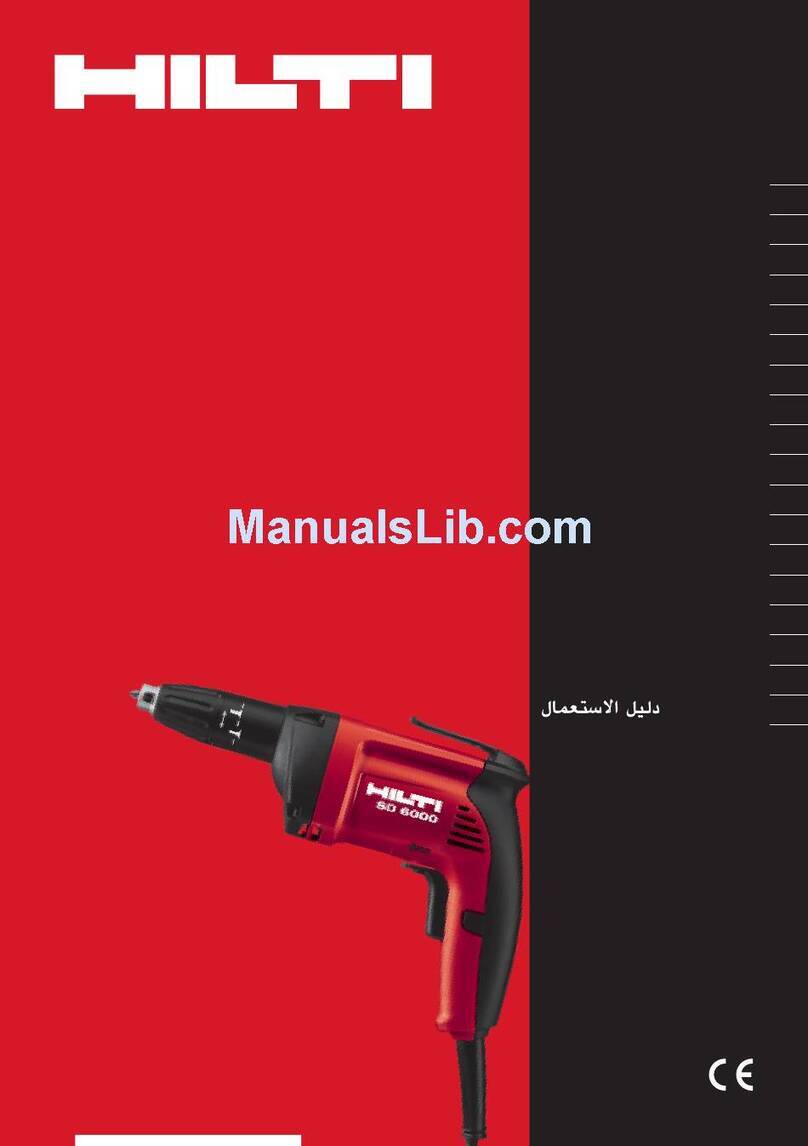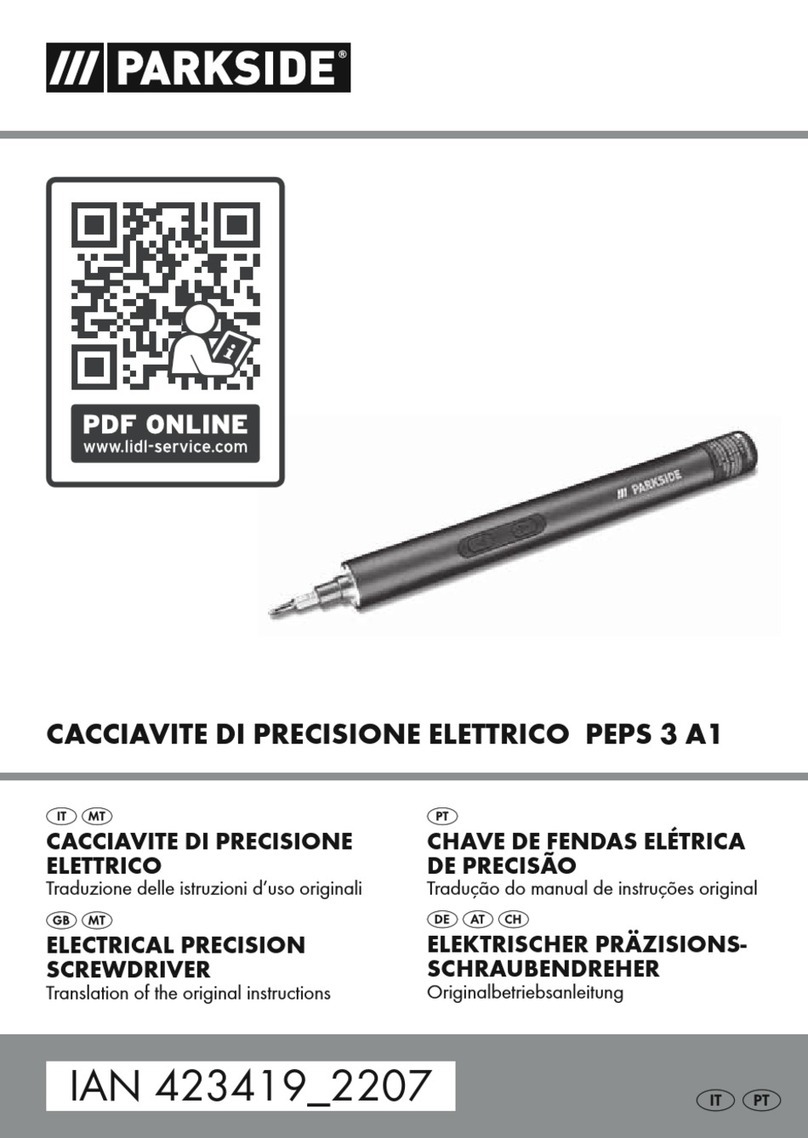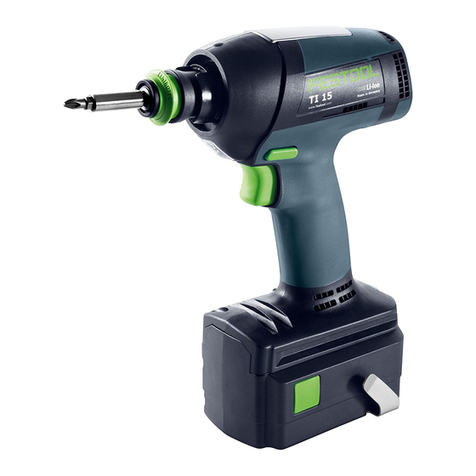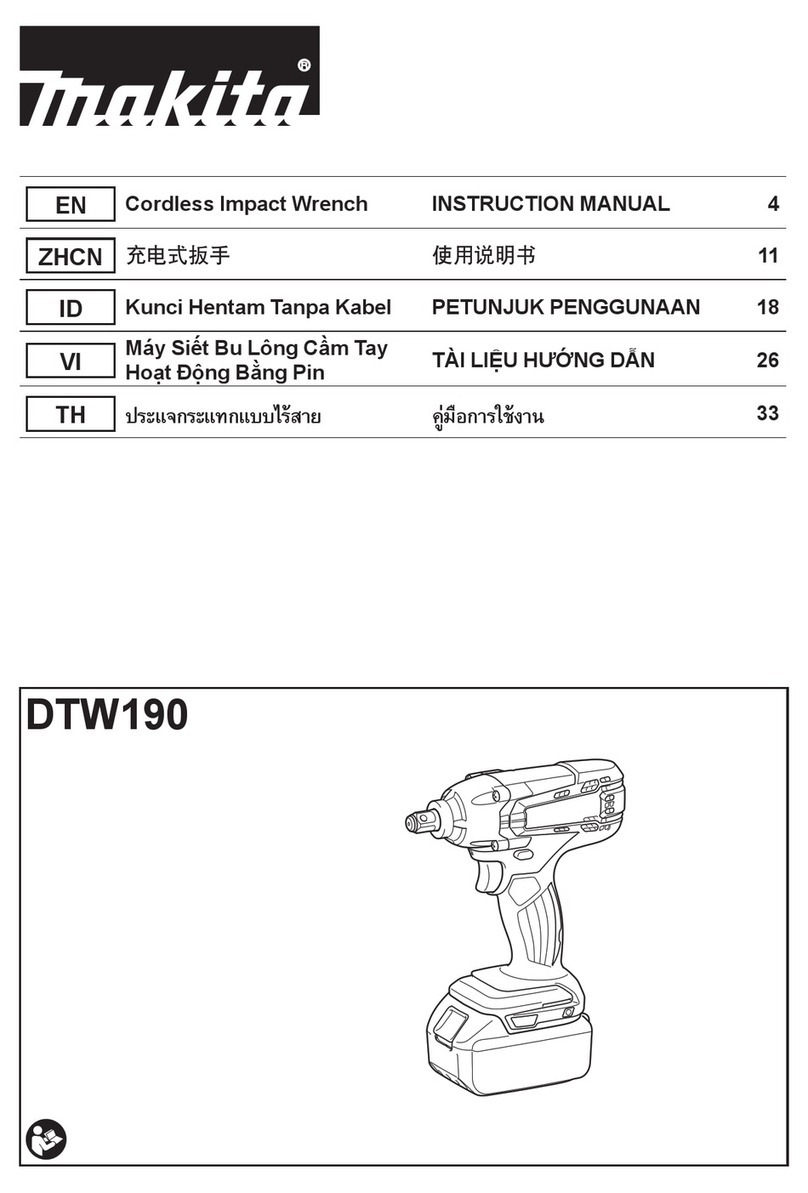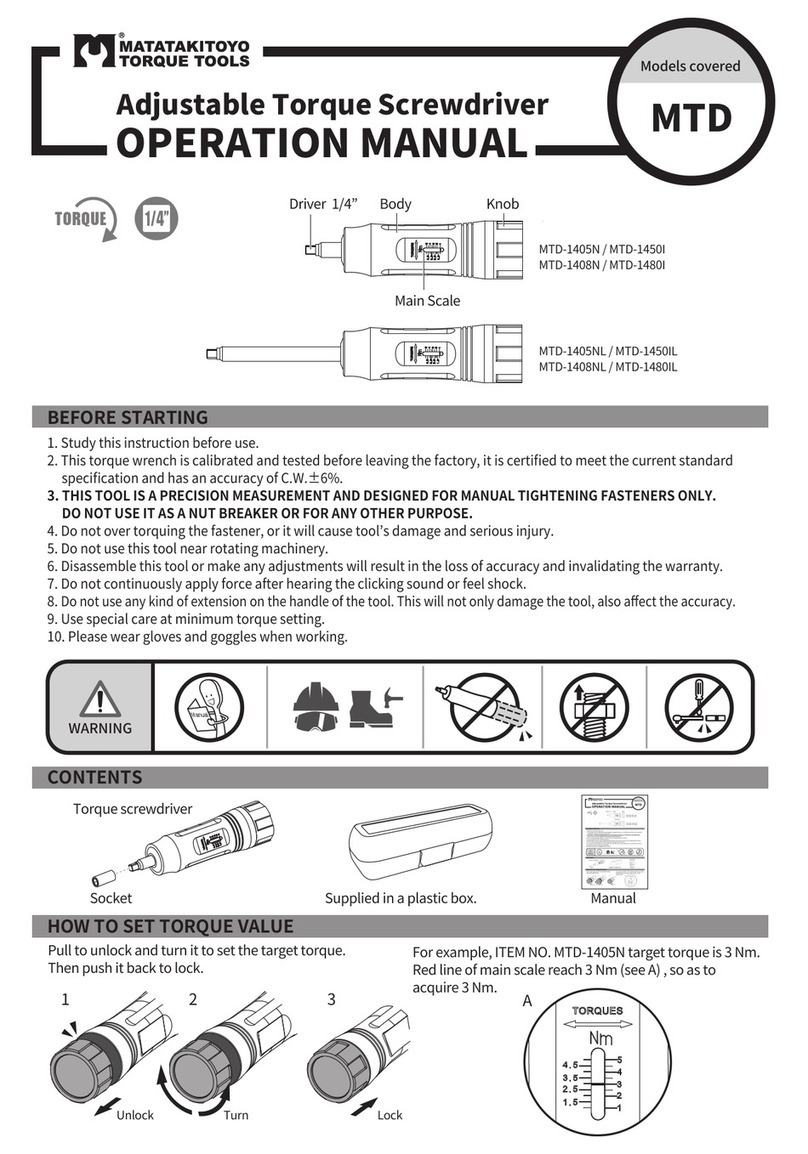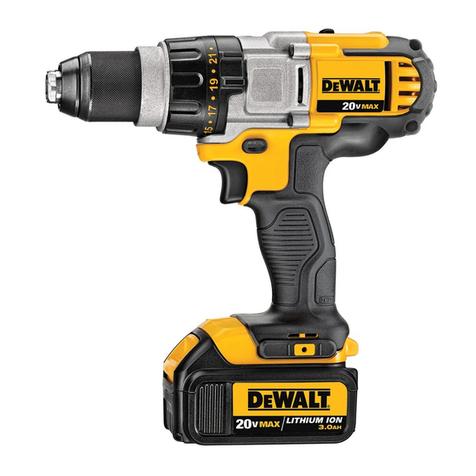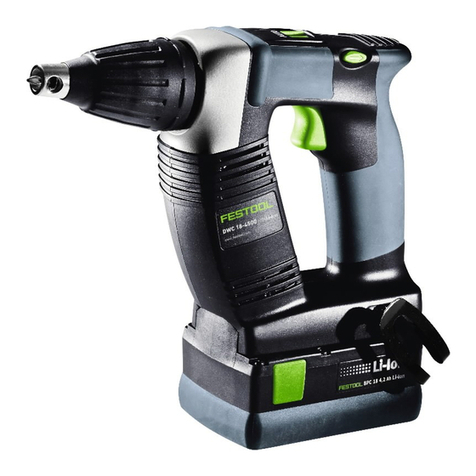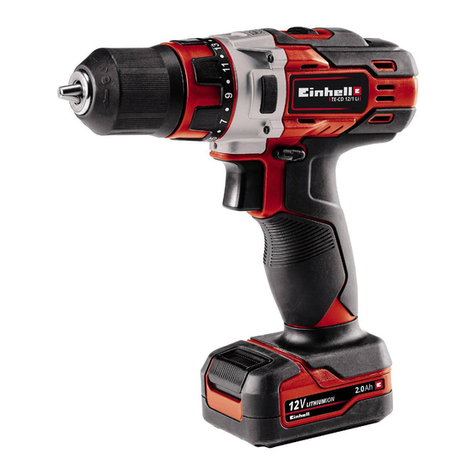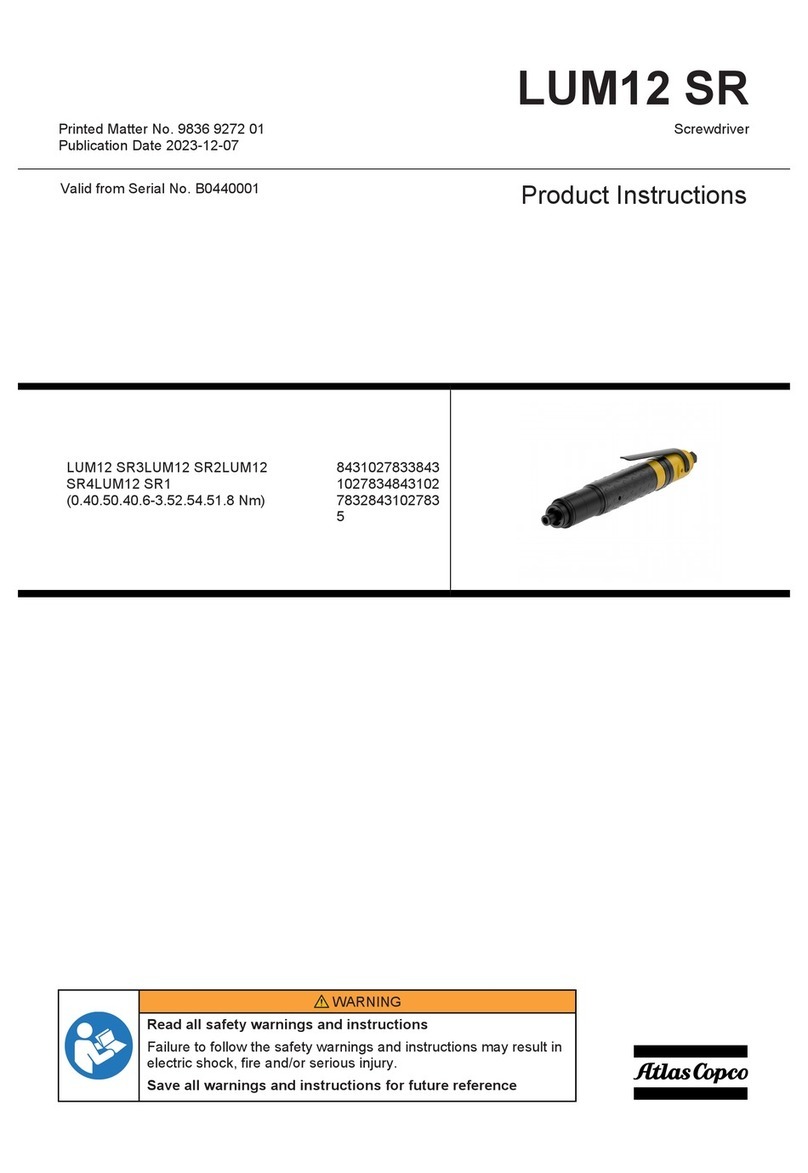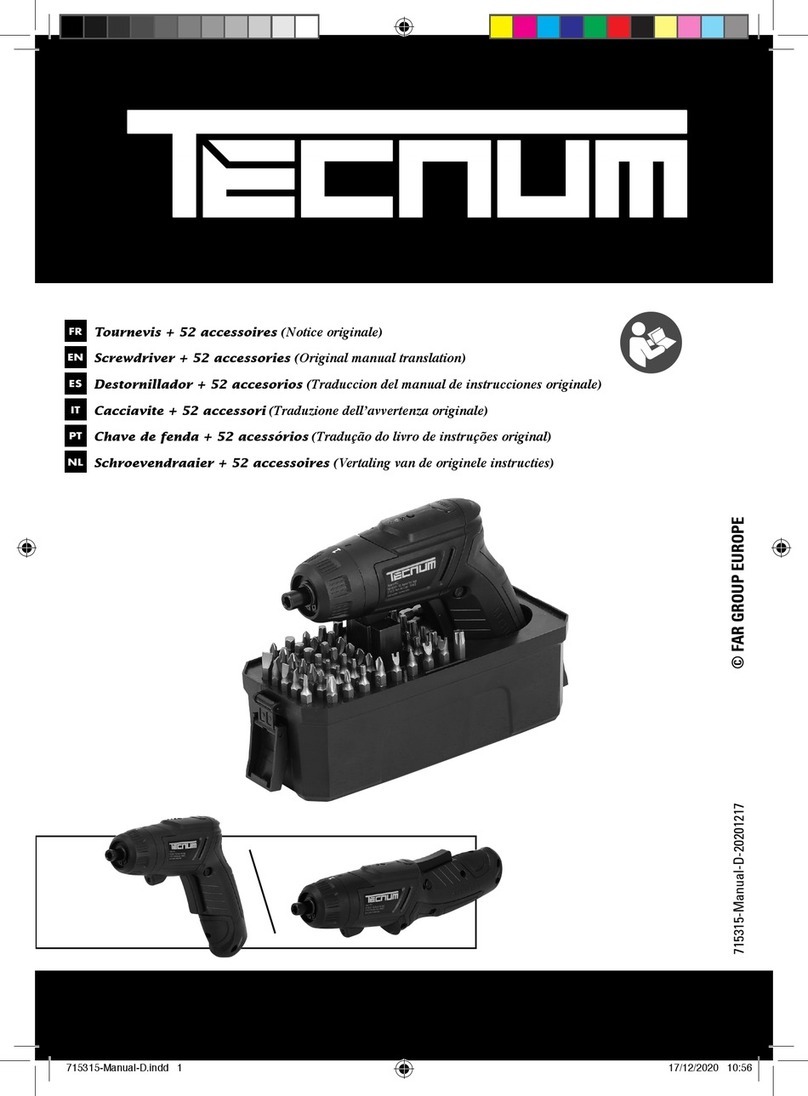
Operating
Select the correct screwdriver bit or fastener to suit the screw or
fastener to be tightened or loosened. Pull the knurled sleeve of slip
chuck forward and insert the appropriate bit.
This model does not incorporate an adjustable slip chuck to control
the torque output applied to the fastener. The only way to control the
torque output to the tool is to control the air pressure fed to the tool.
It is therefore recommended that this tool is used in conjunction with
a PRV (pressure reducing valve) that can be adjusted to vary the input
pressure. The lower the set input air pressure fed to the tool, the
lower the output torque. Your supplier can provide information on
suitable PRV's. To set up the tool to apply a particular torque to a
fastener, first lower the air pressure to say 2 bar (30 p.s.i.) and try the
tool in the application. If the joint is not tightened sufficiently then
increase the air pressure in say 0.5 bar (7.5 p.s.i) increments until the
correct tightness of the joint is achieved. Every time an increase in
pressure is applied start the joint from its loose condition and not to
a partially tightened joint. Do not set the tool to an air pressure in
excess of 7 bar (100 p.s.i.).
Be aware that when using this type of "stall torque" screwdriver the
operator will feel a torque reaction on the hands. This must be
appreciated on the first use and the tool should be held sufficiently
tightly to resist this torque reaction but only grip the tool sufficiently
to resist the torque reaction. Do not "overgrip" the tool and be aware
that this torque reaction will increase with increase in air pressure.
Tool Maintenance
It shall be the tool owner’s and/or employer’s responsibility to assure
that tools are maintained in a safe operating condition. Tool
maintenance and repair shall be performed by authorised, trained,
competent personnel. Tools shall be disconnected from their
compressed air supply before repairs are attempted. Repairs shall be
consistent with the manufacturer’s recommended procedures. Tool,
hoses and fittings shall be replaced if unsuitable for safe operation. It
shall be the tool owner’s and/or employer’s responsibility to keep
required rating markings and warnings on the tool in legible condition.
Safety Rules For A Screwdriver
1) Read all the instructions before using this tool. All operators must
be fully trained in its use and aware of these safety rules.
2) Do not exceed the maximum working air pressure.
3) Use personal safety equipment.
4) Use only compressed air at the recommended conditions.
5) If the tool appears to malfunction remove from use immediately
and arrange for service and repair.
6) If the tool is used with a balancer or other support device ensure
that it is fixed securely.
7) Always keep hands away from the working attachment fitted to
the tool.
8) The tool is not electrically insulated. Never use the tool if there is
any chance of it coming into contact with live electricity.
9) Always when using the tool adopt a firm footing and/or position
and grip the tool firmly to be able to counteract any forces or reaction
forces that may be generated whilst using the tool.
10) Use only correct spare parts. Do not improvise or make
temporary repairs.
11) Do not lock, tape, wire, etc. the on/off valve in the run position.
The trigger/lever etc. must always be free to return to the 'off'
position when it is released.
12) Always shut off the air supply to the tool, and depress the
trigger/lever etc. to exhaust air from the feed hose before fitting,
adjusting or removing the working attachment.
13) Check hose and fittings regularly for wear. Replace if necessary.
Do not carry the tool by its hose and ensure the hand is remote from
the on/off control when carrying the tool with the air supply
connected.
14) Take care against entanglement of moving parts of the tool with
clothing, ties, hair, cleaning rags, etc. This will cause the body to be
drawn towards the tool and can be very dangerous.
15) It is expected that users will adopt safe working practices and
observe all relevant legal requirements when installing, using or
maintaining the tool.
16) Do not install the tool unless an easily accessible and easily
operable on/off valve is incorporated in the air supply.
17) Take care that the tool exhaust air does not cause a problem or
blows on another person.
18) Never lay a tool down unless the working attachment has
stopped moving.
19) Always ensure that the reverse button is in the selected position
before starting the tool.
20) Do not use bits or sockets with excessive wear to the input and
output drives. Make sure the bit, socket, extension is firmly fixed to
the tool.
21) When loosening fasteners first ensure that there is sufficient
clearance behind the tool to avoid hand entrapment. The tool will
move away from the threaded joint as the nut/bolt is loosened and
rides up the thread moving the tool with it.
starts to slow or lose power.
It is recommended that the air pressure at the tool whilst the tool is
running is 90 p.s.i./6.3 bar. The tool can run at lower and higher
pressures with the maximum permitted working air pressure of 100
p.s.i./7.0 bar.
Page No 2

